You can become a member of BBE either as an organisation or as an individual

In this blog, we’re delving into the rich history of St Hilda Colliery Band through the records held in the Brass Bands Archive. Some of these fascinating items—including photographs, programmes, and tickets—are currently on display at the National Coal Mining Museum, offering a unique glimpse into the band's story during the 20th century.
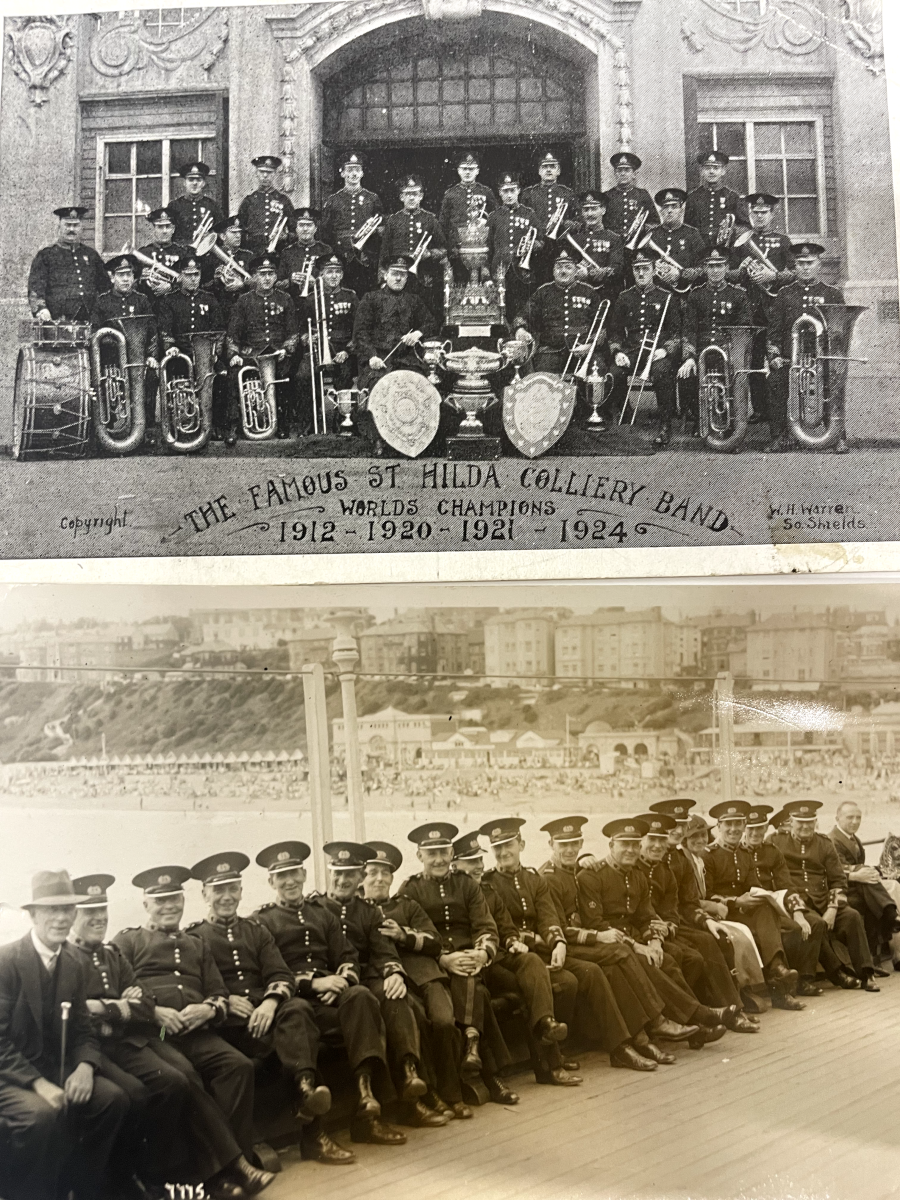
Two photographs of St Hilda Colliery Band [Ref:BBA/B/SH]
St Hilda Colliery Band’s journey began in South Shields in 1869. They were founded as a deputation of miners who, working at the St Hilda Colliery, called upon Mr John Dennison, a brass bander and soon to be founder of the band, with a request that he would form a band amongst them. The original group of men he brought together were almost entirely ignorant of music and Mr Dennison managed to whip them into a band that became a force to be reckoned with. They adopted the name St Hilda Colliery Band in 1906. Up until this time they had many ups and downs with many name changes. Their luck changed with John Ambrose Greenwood, who was making a name for himself as one of the big teachers of the day. Under his tutelage from 1908 they began winning many local contests, and gradually making their presence felt on the contest platform.
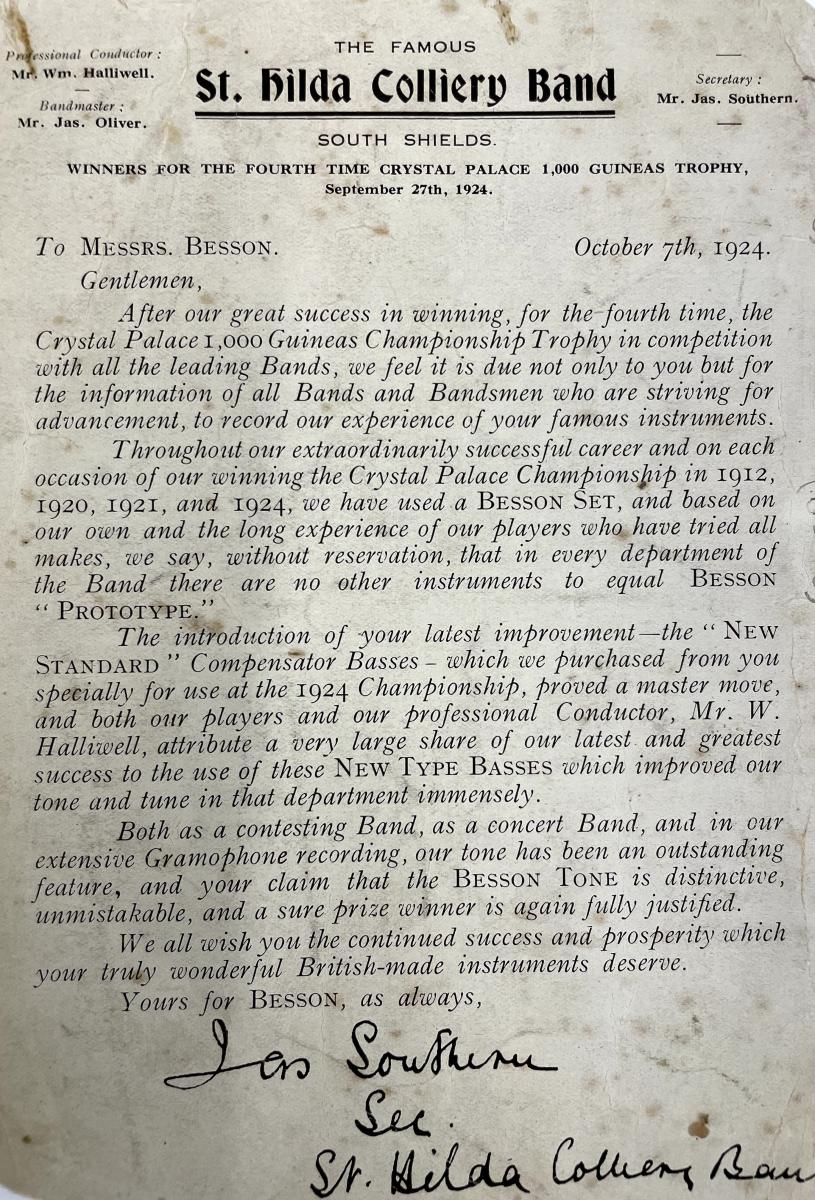
St Hilda Colliery Band flyer to Besson Instruments [Ref:BBA/B/SH/5]
Their crowning glory came in 1912 when they triumphed at the National Championship of Great Britain, which meant bronze medals for every performer. Held at London’s iconic Crystal Palace, the band’s performance of William Tell by Gioachino Rossini (arranged by William Rimmer) earned them national acclaim.
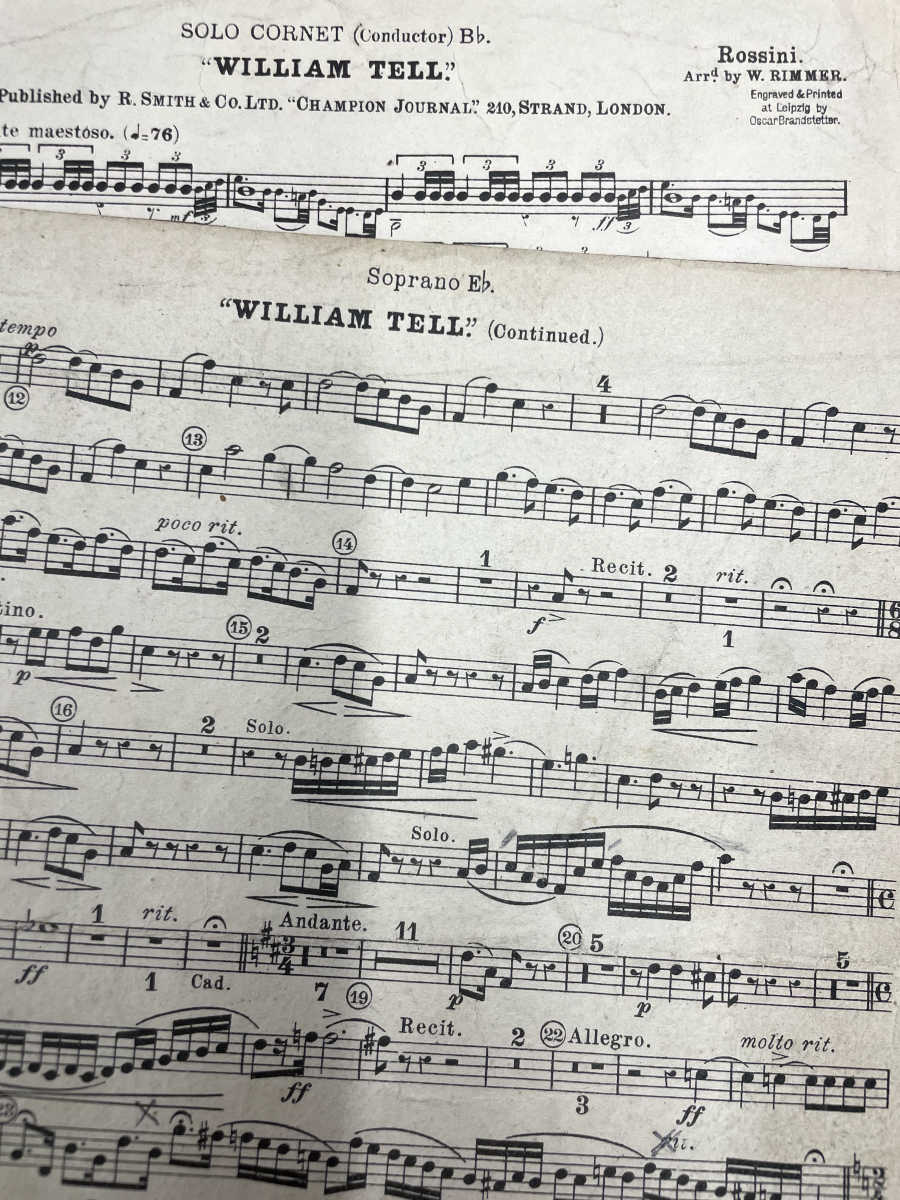
William Tell composed by Gioachino Rossini, arranged by William Rimmer [Ref:BBA/SC/4151]
Their success brought more engagements. During 1913, they again competed in the Championship Section where they won second prize! This, amongst other victories, was just the beginning of an era of success. St Hilda’s went on to claim the National Championship title four more times: in 1920, 1921, 1924, and 1926. 1924 was St. Hilda’s most successful year, they toured England, Scotland, Ireland, Wales, and Isle of Wight and their popularity showed in every place they visited.
In 1925, their fortunes shifted when the colliery temporarily closed leaving many band members unemployed. Undeterred, they turned to band bookings and competitions to make a living. One band bander, Mr Southern (trombonist and miner) sacrificed most of his life savings, and bought the whole of the band property from the St Hilda Miner’s Union for a sum of £200. Ironically, their success and financial gains led them to be classified as professionals, excluding them from amateur competitions, including the 1927 national championships. Despite this setback, the band—now known as St Hilda’s Band—continued to make an impact. They recorded music and even performed outside Buckingham Palace by royal command.
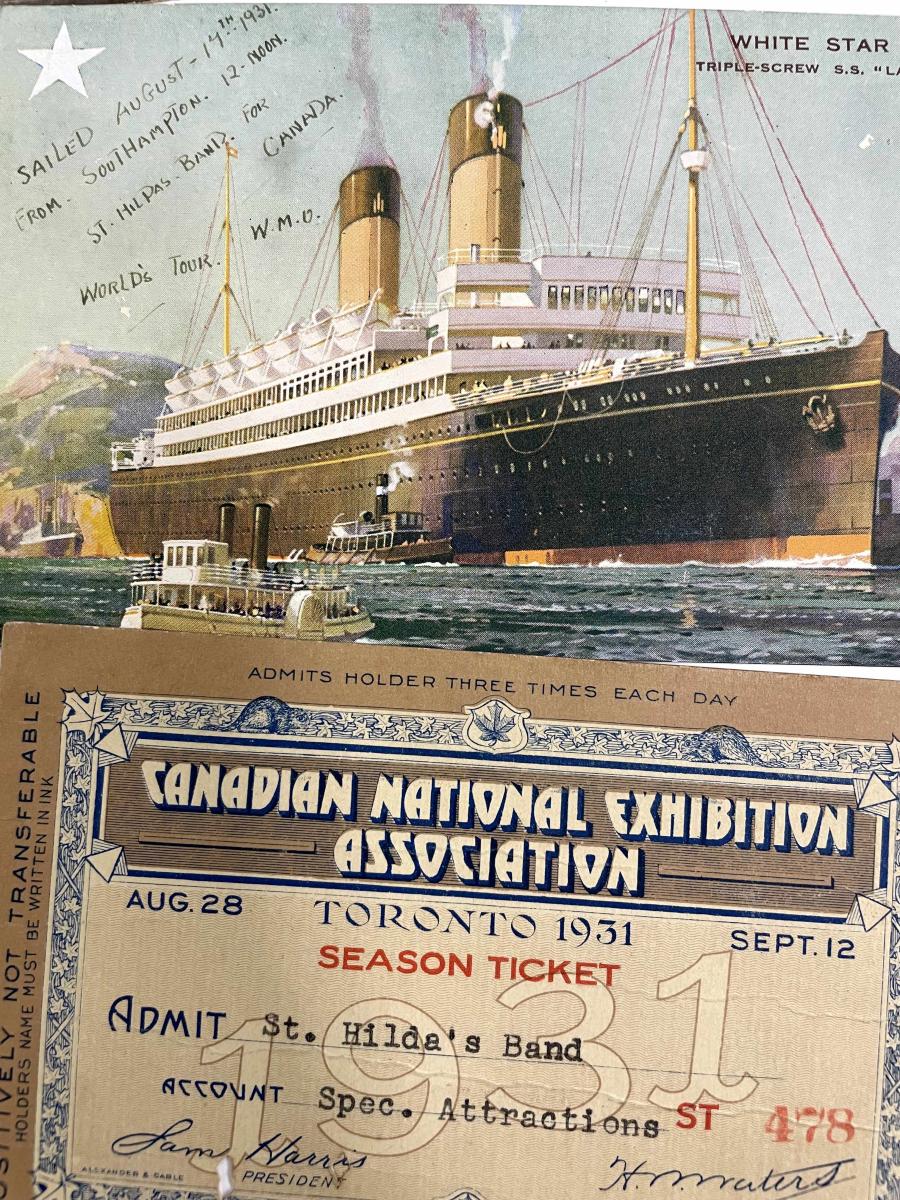
Postcard from St Hilda's Canadian Tour and Canadian National Exhibition Association Season Ticket [Ref:BBA/B/SH/6-7]
In 1931, St. Hilda’s Band went on a big adventure, they went on tour in Canada. They were the guest band at the Canadian National Exhibition in Toronto. They set sail from Southampton on the white star line on August 19th 1931, which you can see on the postcard below. They set sail with the intention to maintain their reputation as one of the best bands of the British Empire, and represent the honour of British Brass bands.During their short tour (apart from the 14 days at the Exhibition at Toronto), they visited Montreal, Ottawa, Peterborough, St. Catherine's, Brookville, Niagara Falls, Belle Ville, Perth, Kingston, and returned to the Massey Hall, Toronto, for a farewell concert.
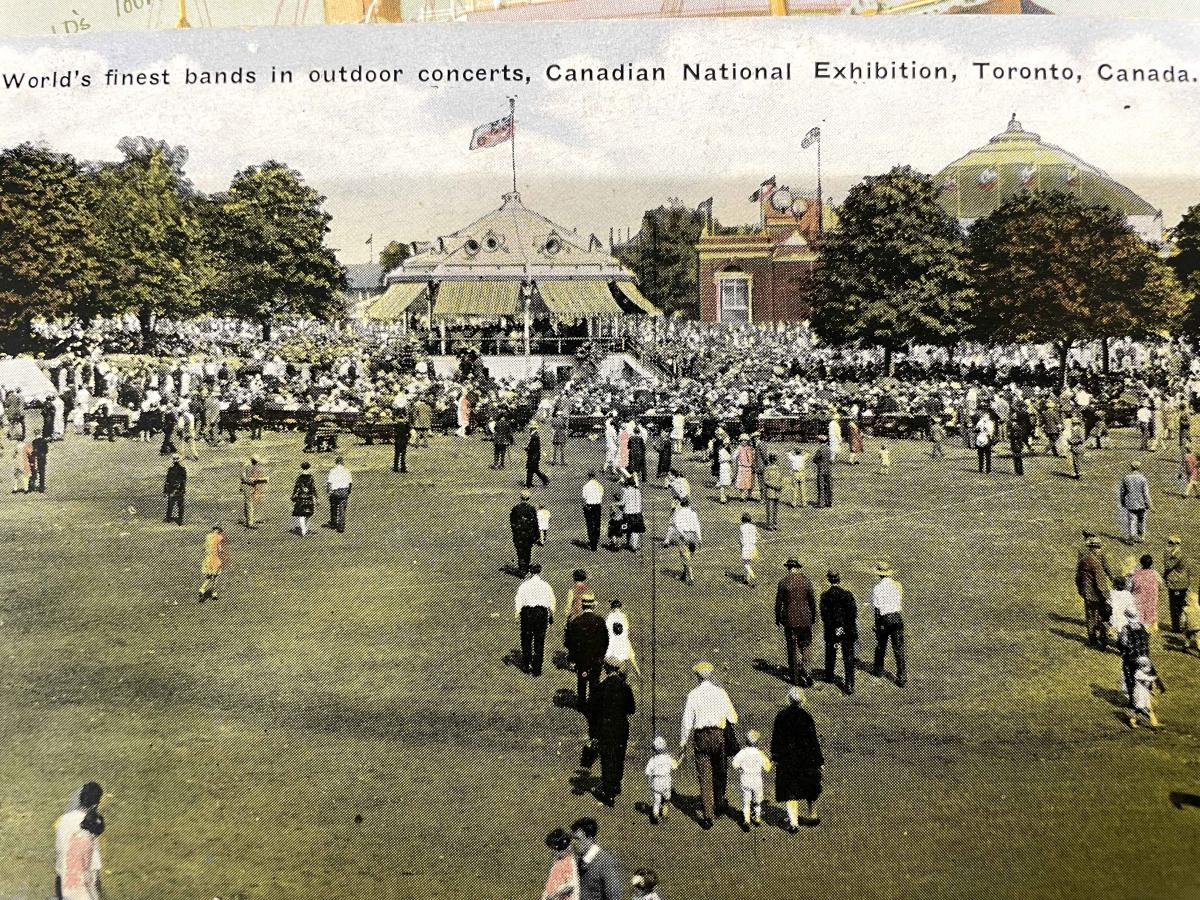
Postcard from the Canadian National Exhibition [Ref:BBA/B/SH/8]
The band disbanded in December 1937, for a number of reasons including unemployment, popularity of wireless, difficulty obtaining first class players, and lack of work - but St Hilda Colliery Band’s legacy lives on. In 2018, a blue plaque was installed on St Hilda’s Pit Head to commemorate their remarkable contributions to brass banding and their community. The story of St Hilda Colliery Band is one of triumph, resilience, and an enduring passion for music, and we’re proud to share their history through the Brass Bands Archive.
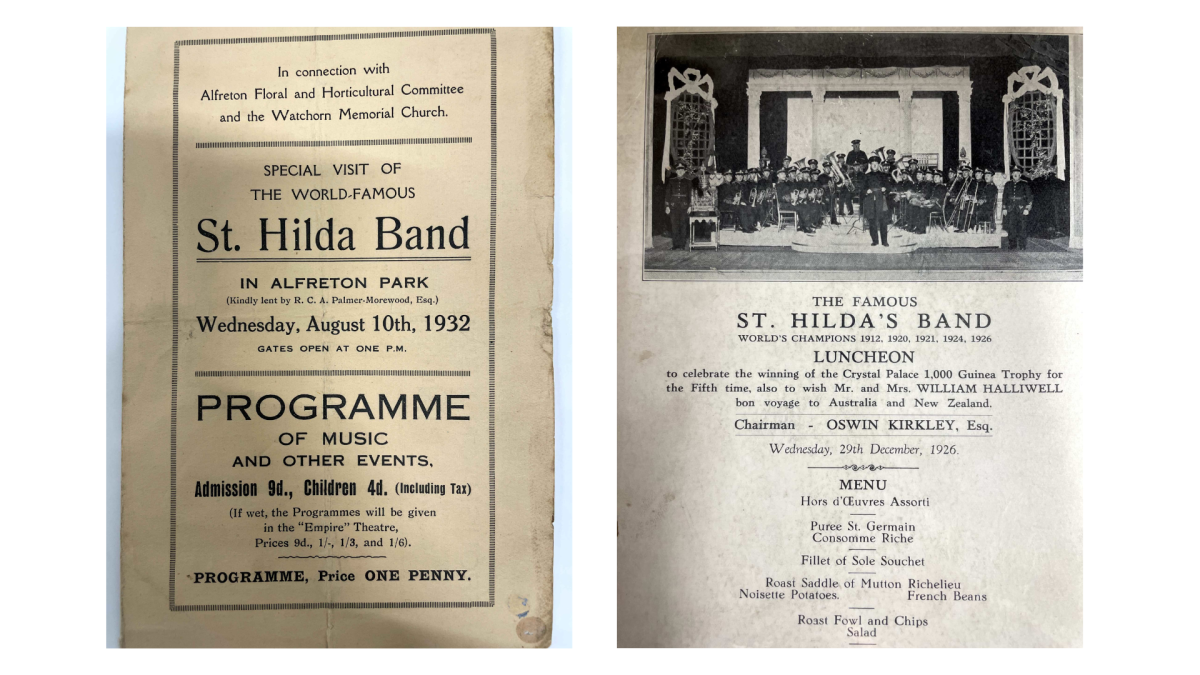
St Hilda Band programme (1932) and St Hilda's Band luncheon menu to celebrate winning at Crystal Palace for the fifth time [Ref:BBA/B/SH/1-2]
Take a listen to Arthur Laycock with the St Hilda Colliery band on Youtube - Titania - Arthur Laycock with the St Hilda Colliery Band - YouTube